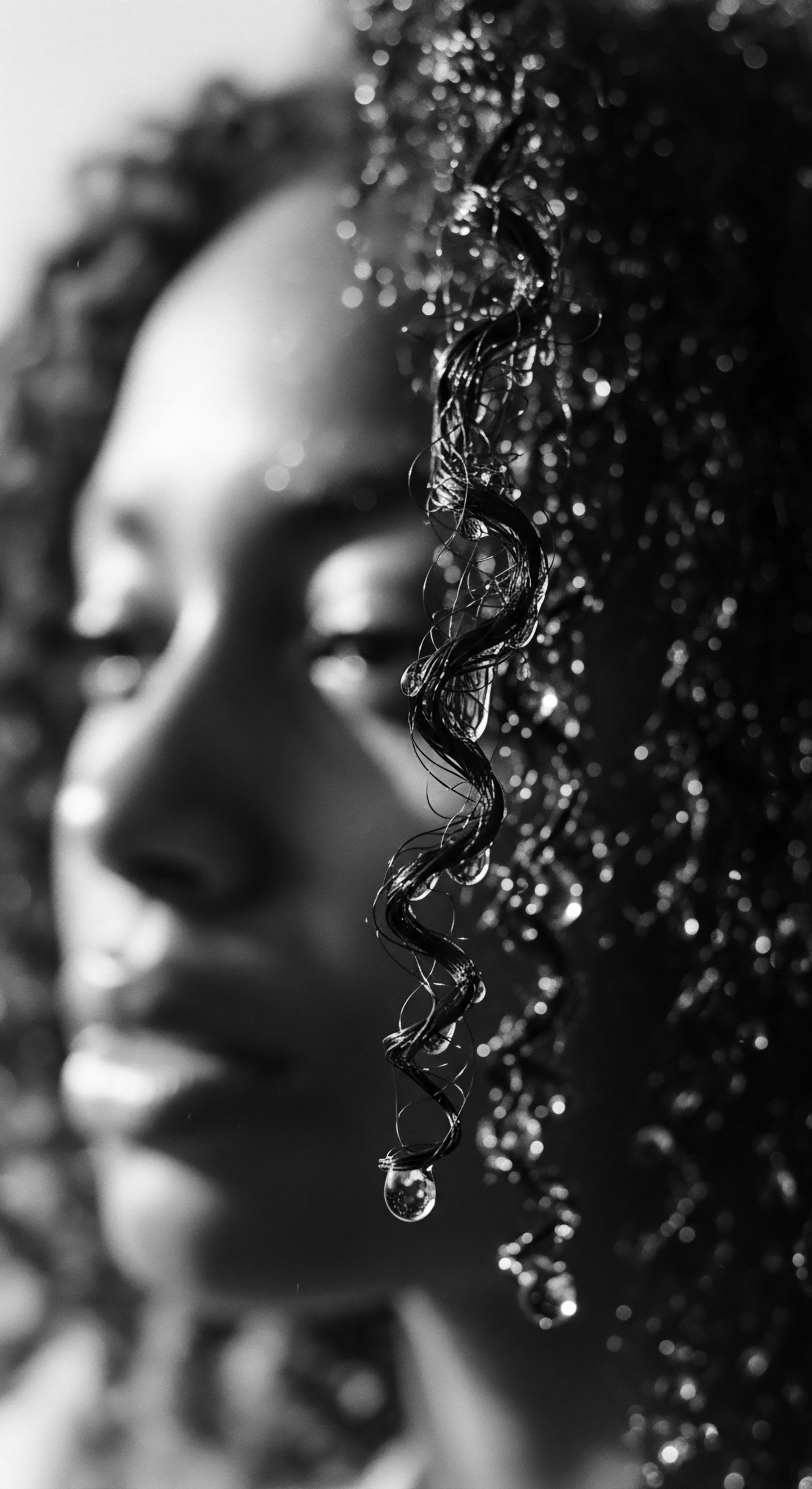
Roots
When you hold a single strand of textured hair between your fingers, do you feel the subtle spiral, the delicate yet robust coil? More than merely a biological filament, it carries within its very structure the whispers of countless generations, a living archive of human ingenuity and profound connection to the earth. To truly grasp protective styling for textured hair, one must first recognize the deep legacy embedded in each coil and kink, tracing its origins not just through modern science, but through the ancestral paths of care and identity.

A Biological Blueprint for Resilience
The anatomy of textured hair, particularly that of individuals with African and mixed-race heritage, presents a remarkable study in adaptability. Unlike straight hair, which tends to grow in a more uniform, circular cross-section, textured hair emerges from an elliptical follicle, dictating its characteristic curl pattern. This elliptical shape, coupled with the unique distribution of disulfide bonds within the hair shaft, creates the spring-like quality we admire.
The hair shaft of highly coiled strands also has a naturally raised cuticle layer, which while contributing to its magnificent volume, also makes it more prone to moisture loss and tangling. This biological reality, far from being a flaw, has historically guided the development of practices that sought to preserve the hair’s delicate balance, practices deeply rooted in observation and ancestral wisdom.
Textured hair, a living testament to ancestral design, reveals a deep narrative within its every curve and coil.
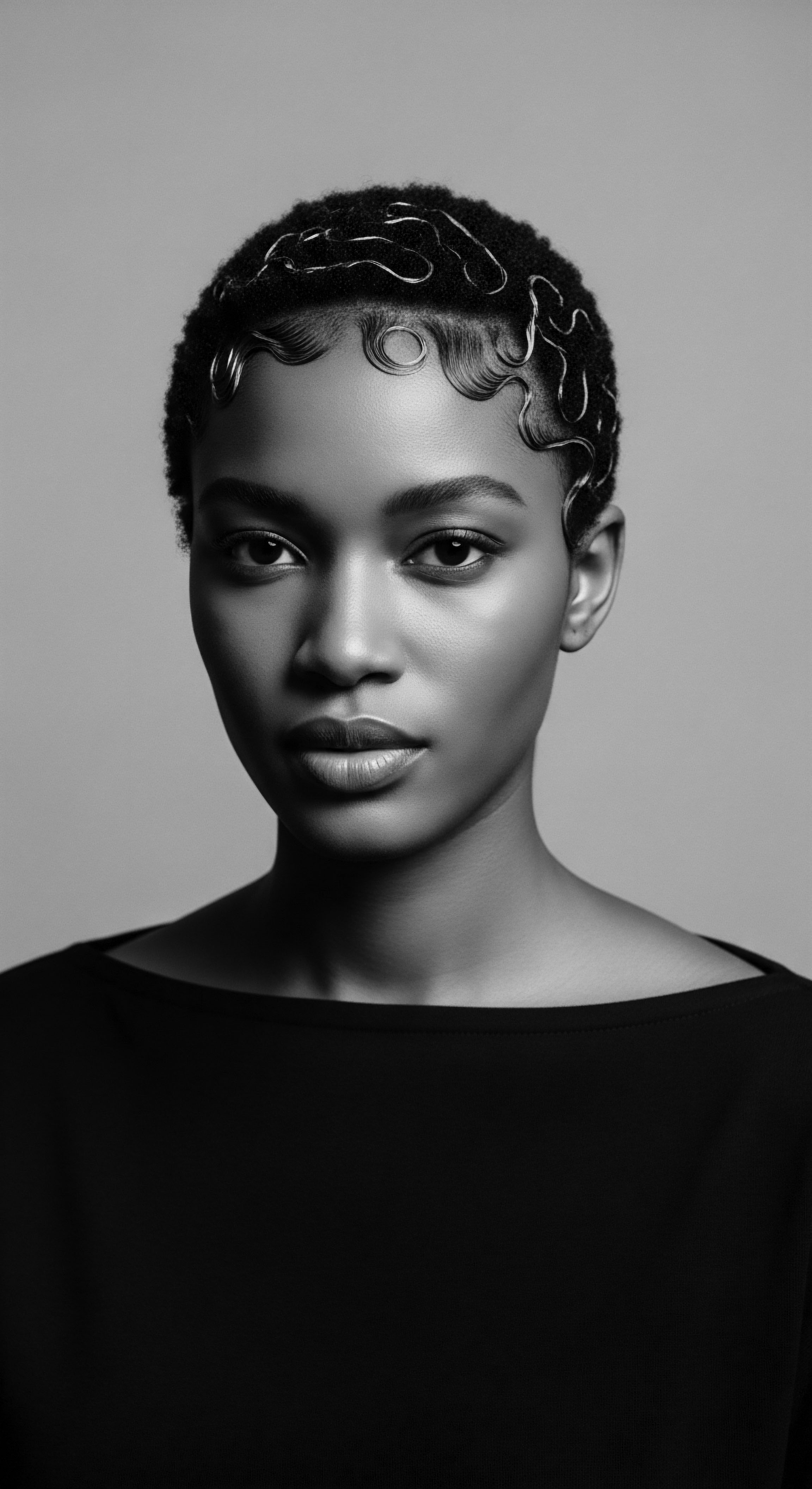
Ancient Echoes of Hair Classification
Long before modern classification systems sought to categorize textured hair into numeric and alphabetic types, African societies possessed their own intricate understanding of hair variation. These ancient classifications, often unspoken yet universally understood, were not about rigid typologies but about communal recognition of hair’s role in conveying identity. A particular coil pattern might indicate a regional lineage, a specific family group, or even a person’s life stage.
The way hair behaved, its ability to hold a style, or its natural luster, informed how it was cared for and adorned within various communities. These understandings were passed down through the practice of hands-on care, a testament to practical knowledge honed over millennia.
- Irun Didi ❉ A Yoruba term, perhaps encompassing what we now call cornrows or plaits, speaking to the meticulous skill involved.
- Irun Kiko ❉ Referring to thread-wrapping styles among the Yoruba, a method used for both styling and protection.
- Shuruba ❉ A term for braids, including cornrows, prevalent in Ethiopia and Eritrea.

What is the Cultural Basis of Understanding Hair Cycles?
Even the hair growth cycle, a concept we now describe with scientific terms like anagen, catagen, and telogen phases, held different significance in ancient African cultures. The continuous cycle of growth, shedding, and renewal was often viewed through a spiritual lens, aligning hair’s life with the rhythms of nature and the continuity of life itself. The reverence for hair as a living entity, as a spiritual antenna connecting individuals to ancestors and deities, as held by the Yoruba people, meant that its care was not merely cosmetic.
This perspective underscored the practice of gentle handling, the application of natural substances, and the creation of styles that protected the hair from environmental rigors, ensuring its sustained health and symbolic potency across its cycle. Hair was seen as an extension of the head, a spiritually significant part of the body, and its care was tied to prosperity and well-being.
In pre-colonial African societies, hairstyles were integral expressions of cultural identity and social affiliation. Styles such as cornrows, braids, and locs varied widely across ethnic groups, each carrying a unique set of meanings. These meanings often signified age, marital status, social rank, or even spiritual beliefs.
The Himba tribe in Namibia, for instance, wore dreadlocked styles coated with red ochre paste, symbolizing their connection to the earth and their ancestors. The intricate patterns woven into a person’s hair conveyed their role within the community, becoming a visual language that spoke of heritage and identity.

Ritual
The hands that braid, twist, and adorn textured hair across generations are conduits of living tradition, weaving together ancestral wisdom with contemporary expression. Protective styling, at its heart, represents a continuation of ancient African rituals that prioritized hair health, communal bonding, and self-expression. These practices were never simply about aesthetics; they embodied deep social, spiritual, and functional purposes, passed down through the rhythmic movements of fingers and the shared stories of communal spaces.

A Historical Continuum of Protective Styles
From the earliest rock paintings in the Sahara dating back to 3500 BCE, depicting women with cornrows, we witness the enduring legacy of these styles. Braiding techniques were perfected over millennia, becoming a sophisticated art form that communicated volumes. In West African societies of the 1400s, a person’s hairstyle could instantly convey their tribe, social status, marital status, age, or wealth.
These styles were inherently protective, designed to safeguard the hair from harsh environments, minimize manipulation, and promote length retention. The use of natural butters, herbs, and powders during these styling sessions was standard practice, offering moisture and sustenance to the hair.
Protective styles are more than trends; they are echoes of ancient African ingenuity for hair health and communal connection.
The arrival of the transatlantic slave trade marked a traumatic disruption, yet the spirit of protective styling persisted as a profound act of resistance. Enslaved Africans, stripped of their identity through forced head shaving, found ways to reclaim agency through their hair. Cornrows, in particular, transcended their aesthetic and social functions to become covert tools of survival. In a remarkable historical instance, documented in Colombia, enslaved people utilized cornrow patterns to create maps and convey messages related to escape routes.
Small tools or seeds, crucial for survival after escape, were hidden within these tightly woven braids. This powerful legacy underscores how protective styles became symbols of resilience, a silent assertion of identity in the face of adversity.

What is the Cultural Significance of Braiding as a Communal Activity?
The physical act of braiding itself was, and continues to be, a deeply communal experience. In traditional African societies, braiding sessions served as spaces for intergenerational exchange, where stories, wisdom, and cultural knowledge were passed down. Mothers braided their daughters’ hair, not merely styling it, but also instilling values and teaching about their heritage. This intimate ritual fostered strong social bonds, creating a sense of belonging and mutual care.
Even amidst the brutal conditions of slavery, Sundays became a sacred time for communal hair care among enslaved people, a moment to reconnect and preserve their shared humanity. This tradition speaks to the enduring power of hair as a unifying force, where the hands-on practice becomes a conduit for cultural memory.
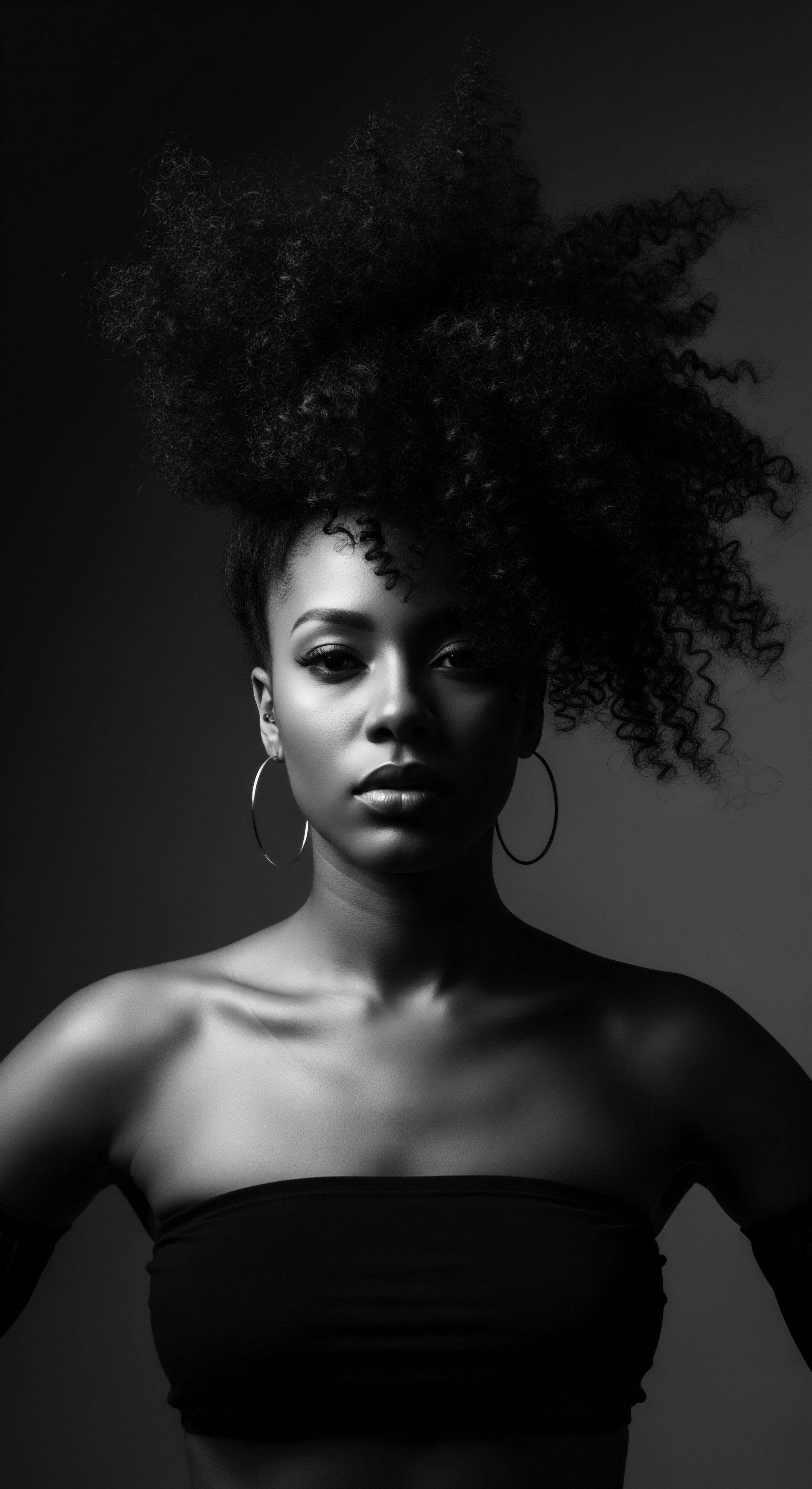
The Tools of Tradition and Transformation
The implements used in protective styling also carry a rich historical significance. Early African societies crafted combs from wood, bone, and ivory, often adorning them with designs that conveyed spiritual aspirations or social standing. These tools were not just functional; they were artistic expressions themselves, reflecting the profound value placed on hair care.
While modern tools have evolved, the principles of minimal tension, gentle detangling, and meticulous sectioning—all cornerstones of protective styling today—echo the careful handling practiced by ancestral hands. The continuity of these approaches highlights a timeless understanding of textured hair’s unique needs, a wisdom that transcends eras.
| Historical Context Pre-Colonial Africa (3500 BCE onwards) |
| Traditional Practice/Style Cornrows, Braids, Thread-Wrapping (Irun Kiko) |
| Cultural or Functional Purpose Identity marker (tribe, status, age, marital status), spiritual connection, environmental protection. |
| Historical Context Slavery Era (15th-19th centuries) |
| Traditional Practice/Style Cornrows, Headwraps, Plaits |
| Cultural or Functional Purpose Covert communication (escape maps), survival (hiding seeds), cultural resistance, manageability in harsh conditions. |
| Historical Context Natural Hair Movement (1960s, 2000s) |
| Traditional Practice/Style Afros, Braids, Locs, Twists |
| Cultural or Functional Purpose Symbol of Black pride and power, rejection of Eurocentric beauty standards, self-acceptance, political statement. |
| Historical Context Protective styles have consistently served as vital expressions of identity, survival, and cultural resilience across the heritage of textured hair. |

Relay
The journey of protective styling, from ancient wisdom to contemporary practice, forms a continuous relay race through time, carrying forward the torch of holistic hair care. This care extends beyond mere styling, recognizing that textured hair thrives when its environment, its nourishment, and its nightly rest are considered with intentionality, all filtered through the deep knowledge of ancestral practices.

Ancestral Roots of Holistic Hair Care
Traditional African hair care regimens were inherently holistic, recognizing the interplay between internal health, environmental factors, and external care. Indigenous communities did not separate hair health from overall well-being. Their practices often incorporated readily available natural ingredients, understanding their medicinal and conditioning properties long before modern science articulated their chemical compositions.
- Chebe Powder ❉ Used by women of the Bassara/Baggara Arab tribe in Chad for length retention, often mixed with water and moisturizers. This traditional preparation is known for helping to seal the hair cuticle and aiding in preserving hair length.
- Oka ❉ A clay from the Kuna region of Namibia, used by the Himba tribe as a moisturizer when mixed with animal fat. This mixture is applied to braided hair, which can remain styled for months, showcasing a low-manipulation approach.
- Ambunu ❉ Hailing from Chad, this plant serves as a cleanser, detangler, and can soothe an itchy scalp, offering a traditional alternative to modern shampoos.
- Shea Butter ❉ A staple across many African cultures, recognized for its moisturizing and protective qualities, often applied to hair to retain moisture.
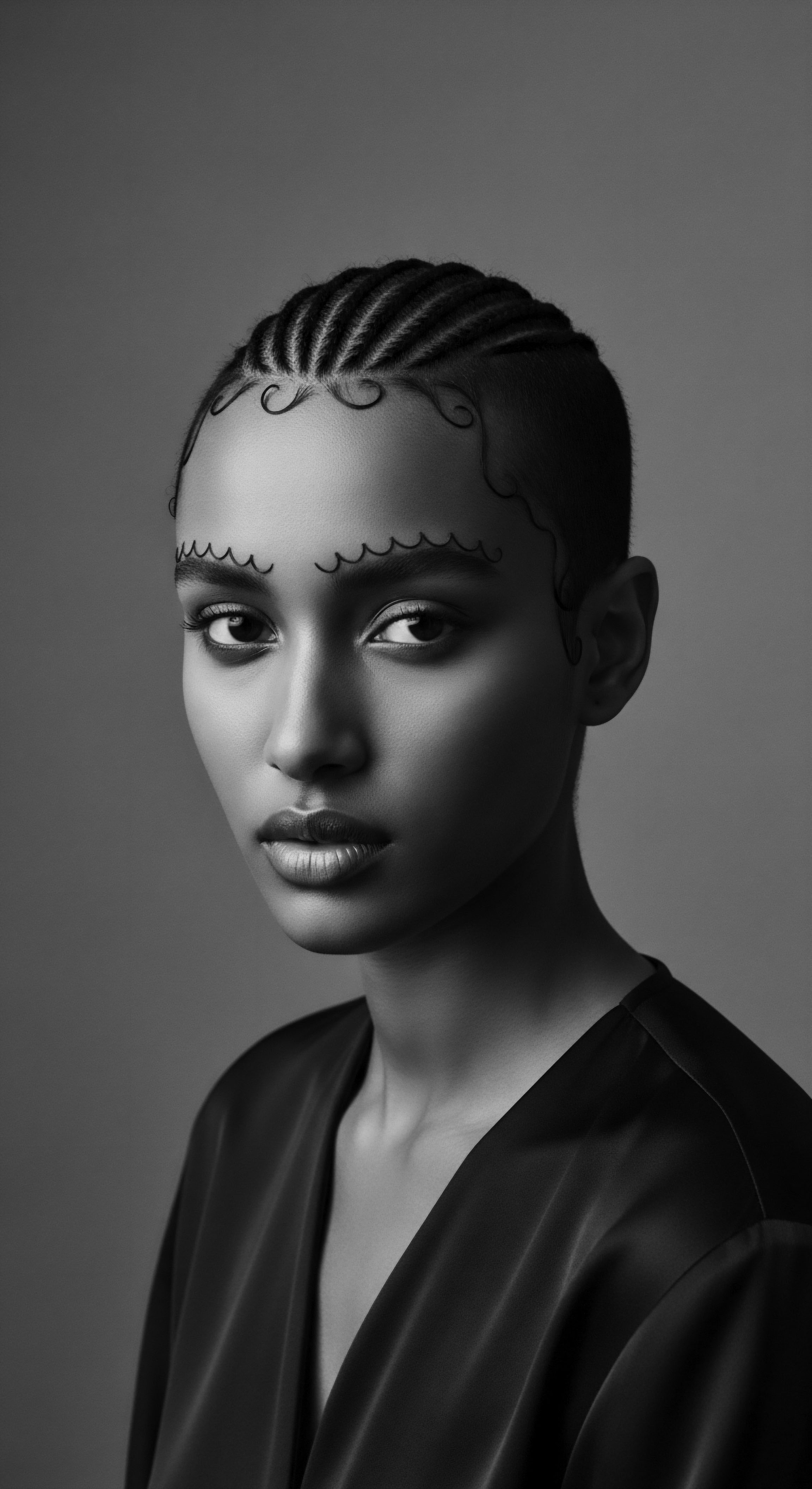
The Nighttime Sanctuary and Bonnet Wisdom
The importance of nighttime protection for textured hair finds a strong lineage in historical practices. While the modern satin bonnet may seem like a contemporary invention, its conceptual roots lie in the traditional use of headwraps and coverings. During slavery, enslaved women often covered their hair for practical reasons, such as protection from sun and lice, but also due to Eurocentric beauty standards enforced by slaveholders.
Over time, these coverings evolved beyond mere compliance, becoming a means of personal expression and hair preservation, even as they were sometimes mandated by discriminatory laws like Louisiana’s 1786 Tignon Law. This historical context illuminates the bonnet’s dual legacy ❉ a tool born of both necessity and an enduring desire to protect and honor one’s hair, guarding against moisture loss and friction during sleep.

How does Modern Hair Science Validate Ancestral Hair Care?
Contemporary hair science, in its ongoing exploration, often finds validation for age-old ancestral practices. The understanding that low manipulation is key for length retention in textured hair, for instance, is a concept well-known to traditional African communities who practiced styles that remained in place for extended periods. The emphasis on moisturizing ingredients, such as natural butters and oils, in ancestral care directly aligns with modern scientific insights into textured hair’s propensity for dryness.
Even the communal aspect of hair care, the gentle touch and shared knowledge, contributes to the hair’s overall well-being, reducing stress and promoting a positive relationship with one’s self and community. This convergence of ancient wisdom and modern understanding underscores the profound efficacy of heritage-based hair care.
Despite the richness of this heritage, textured hair has faced persistent discrimination throughout history. In the Western world, Afro-textured hair and its associated styles have often been viewed negatively, deemed “unprofessional,” “unattractive,” or “unclean.” This societal bias has led to concrete consequences. A study conducted by Dove in the UK revealed that half of Black and mixed women with Afro-textured hair have experienced discrimination because of their hair.
(Dove, 2019) This discrimination has manifested in various forms, from job loss and denial of employment to exclusion from school activities, impacting mental and physical well-being. The continued struggle for acceptance of natural hair, even today with movements like the CROWN Act, demonstrates the ongoing impact of historical biases against textured hair and its heritage.
The enduring wisdom of ancestral hair care, though often validated by modern science, continues to battle historical biases against textured hair.

Relay
The journey of protective styling, from ancient wisdom to contemporary practice, forms a continuous relay race through time, carrying forward the torch of holistic hair care. This care extends beyond mere styling, recognizing that textured hair thrives when its environment, its nourishment, and its nightly rest are considered with intentionality, all filtered through the deep knowledge of ancestral practices.
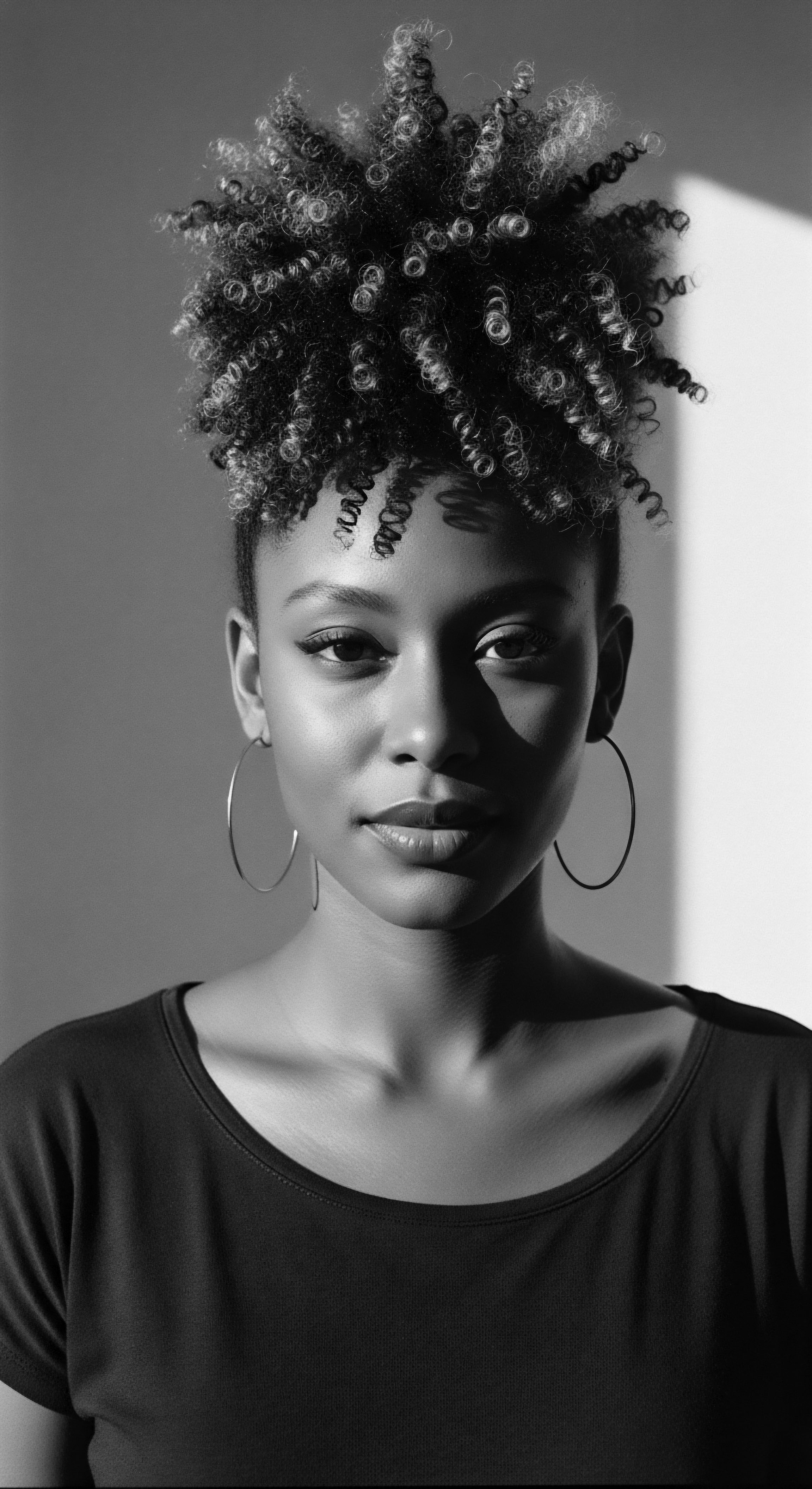
Ancestral Roots of Holistic Hair Care
Traditional African hair care regimens were inherently holistic, recognizing the interplay between internal health, environmental factors, and external care. Indigenous communities did not separate hair health from overall well-being. Their practices often incorporated readily available natural ingredients, understanding their medicinal and conditioning properties long before modern science articulated their chemical compositions.
- Chebe Powder ❉ Used by women of the Bassara/Baggara Arab tribe in Chad for length retention, often mixed with water and moisturizers. This traditional preparation is known for helping to seal the hair cuticle and aiding in preserving hair length.
- Oka ❉ A clay from the Kuna region of Namibia, used by the Himba tribe as a moisturizer when mixed with animal fat. This mixture is applied to braided hair, which can remain styled for months, showcasing a low-manipulation approach.
- Ambunu ❉ Hailing from Chad, this plant serves as a cleanser, detangler, and can soothe an itchy scalp, offering a traditional alternative to modern shampoos.
- Shea Butter ❉ A staple across many African cultures, recognized for its moisturizing and protective qualities, often applied to hair to retain moisture.

The Nighttime Sanctuary and Bonnet Wisdom
The importance of nighttime protection for textured hair finds a strong lineage in historical practices. While the modern satin bonnet may seem like a contemporary invention, its conceptual roots lie in the traditional use of headwraps and coverings. During slavery, enslaved women often covered their hair for practical reasons, such as protection from sun and lice, but also due to Eurocentric beauty standards enforced by slaveholders.
Over time, these coverings evolved beyond mere compliance, becoming a means of personal expression and hair preservation, even as they were sometimes mandated by discriminatory laws like Louisiana’s 1786 Tignon Law. This historical context illuminates the bonnet’s dual legacy ❉ a tool born of both necessity and an enduring desire to protect and honor one’s hair, guarding against moisture loss and friction during sleep.

How does Modern Hair Science Validate Ancestral Hair Care?
Contemporary hair science, in its ongoing exploration, often finds validation for age-old ancestral practices. The understanding that low manipulation is key for length retention in textured hair, for instance, is a concept well-known to traditional African communities who practiced styles that remained in place for extended periods. The emphasis on moisturizing ingredients, such as natural butters and oils, in ancestral care directly aligns with modern scientific insights into textured hair’s propensity for dryness.
Even the communal aspect of hair care, the gentle touch and shared knowledge, contributes to the hair’s overall well-being, reducing stress and promoting a positive relationship with one’s self and community. This convergence of ancient wisdom and modern understanding underscores the profound efficacy of heritage-based hair care.
Despite the richness of this heritage, textured hair has faced persistent discrimination throughout history. In the Western world, Afro-textured hair and its associated styles have often been viewed negatively, deemed “unprofessional,” “unattractive,” or “unclean.” This societal bias has led to concrete consequences. A study conducted by Dove in the UK revealed that half of Black and mixed women with Afro-textured hair have experienced discrimination because of their hair.
(Dove, 2019) This discrimination has manifested in various forms, from job loss and denial of employment to exclusion from school activities, impacting mental and physical well-being. The continued struggle for acceptance of natural hair, even today with movements like the CROWN Act, demonstrates the ongoing impact of historical biases against textured hair and its heritage.
The enduring wisdom of ancestral hair care, though often validated by modern science, continues to battle historical biases against textured hair.

Reflection
As we trace the lineage of protective styling for textured hair, a narrative of astounding resilience, profound ingenuity, and unwavering cultural affirmation unfolds. This is not a static history, but a living, breathing testament to the enduring spirit of Black and mixed-race peoples. Each twist, each braid, each protective wrap carries the memory of hands that nurtured, of communities that supported, and of identities that refused to be erased. The wisdom passed down through generations, often in the face of adversity, speaks to a deep connection to self and heritage that transcends time.
The very practices we use today, from the deliberate choice of natural ingredients to the conscious act of covering our coils at night, are direct callbacks to ancestral care rituals. They are whispers from the past, reminding us that true beauty lies not in conformity, but in authenticity and the honoring of one’s unique biological and cultural blueprint. This deep understanding empowers us to not just care for our hair, but to participate in a rich, ongoing dialogue with our ancestors, strengthening the bonds of heritage with every strand. The path of textured hair care, in its deepest sense, is a journey of self-discovery and a celebration of a legacy that continues to shape our present and illuminate our future.
References
- Afriklens. (2024, November 1). African Hairstyles ❉ Cultural Significance and Legacy.
- BLAM UK CIC. (2022, September 15). The history of Black Hair.
- Beds SU. (2022, October 7). Black History Month 2022 ❉ The History Behind Cornrows.
- Byrdie. (2022, April 28). The Beautiful, Black History of Cornrows.
- Creative Support. (2022, September 15). The History of Black Hair.
- Da Costa, D. (n.d.). History of the Natural Texture Hair Movement.
- DOLAPO OBAT. (2023, December 17). The Intricate Tapestry of African Braided Art.
- Dove. (2019). CROWN Research Study. (This is an example citation for the Dove study, reflecting its nature as a research piece.)
- IDRA. (2025, February). Confronting Hair Discrimination in Schools – A Call to Honor Black History by Protecting Student Rights.
- JSTOR Daily. (2019, July 3). How Natural Black Hair at Work Became a Civil Rights Issue.
- Khumbula. (2024, April 16). A Crowning Glory ❉ Hair as History, Identity, and Ritual.
- Library of Congress. (n.d.). Heavy is the Head ❉ Evolution of African Hair in America from the 17th c. to the 20th c.
- Odele Beauty. (2024, January 16). A History Lesson On Hair Braiding.
- Obscure Histories. (2024, February 13). Ancient Gems ❉ A Historical Survey of African Beauty Techniques.
- Royaltee Magazine. (2021, February 17). Braids, Plaits, Locs ❉ The History of Black Protective Hairstyles.
- The Queen’s Journal. (2025, February 7). History, identity, and community ❉ The significance of Black hair.
- The Resilient Tresses ❉ West African Black Hair History from the 1400s to Today #63. (2024, March 1).
- The Secret Meaning of the African Cornrows – Black owned business directory. (2019, October 8).
- Thrifts & Tangles. (2021, December 16). The Evolution of Black Hair for Beauty & Resistance.
- UNice Stylists Emphasize Importance Of Protective Hairstyles For Black Women – Forbes. (2023, November 20).
- University of Salford Students’ Union. (2024, October 29). The Remarkable History Behind Black Hairstyles.
- Uptown Curl. (2024, February 26). The Natural Hair Movement.
